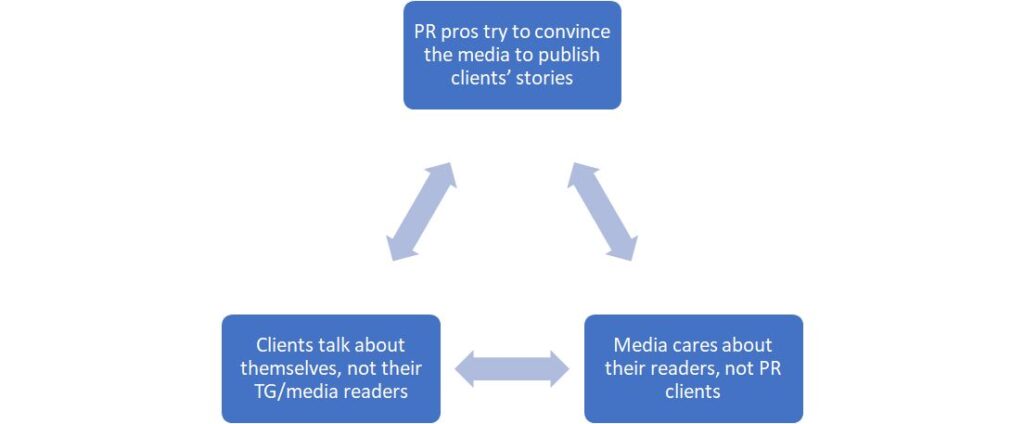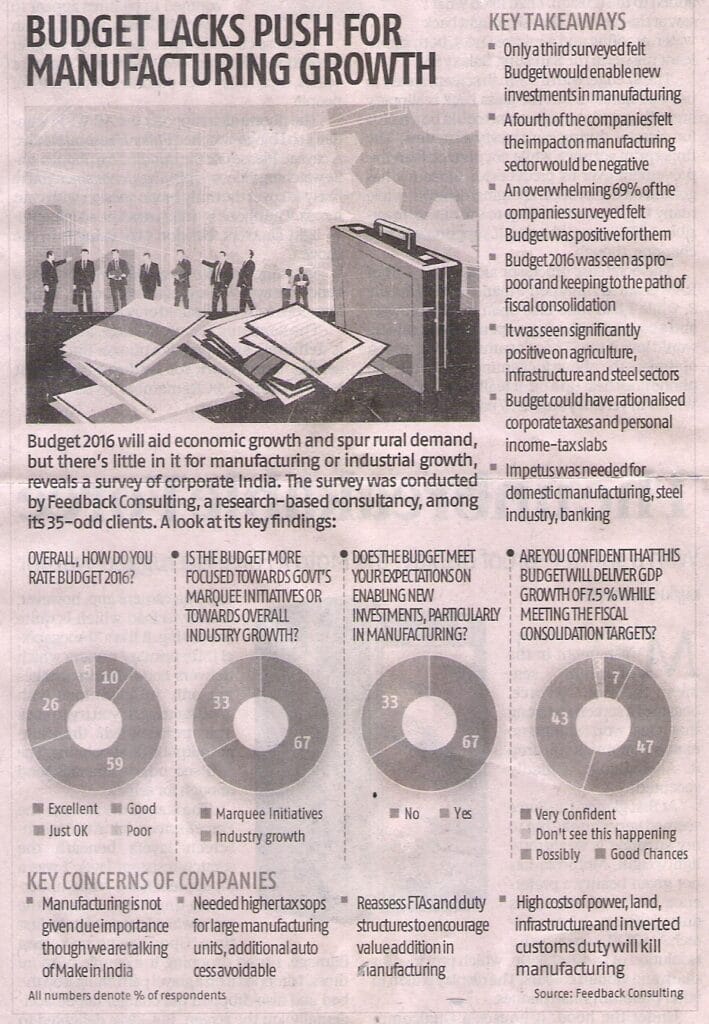Ask a public relations professional about her job and the most common answer would be “it’s one of the most difficult jobs ever”.
What makes it so? I think I have the answer to this question. Let me break it into small parts to make it easy to understand. (Read carefully as the following describes the intricate details of how clients, PR Professionals and media work together.)
Part 1: PR professionals spend most of their waking hours trying to get their clients’ stories published in the media.
Part 2: The media doesn’t care about the client’s story. It cares about the readers.
Part 3: The readers are the target audience for clients, but clients are busy talking about themselves.

This creates a vicious and unbreakable loop. The end result is that the stories that clients want in media are seldom published, and PR agencies’ struggle never ends.
Naturally, PR becomes one of the most difficult jobs ever.
But there is a way to break this loop.
One can do that by developing ideas that connect the client’s business objectives to the needs of their target audience.
For example, let’s take the case of a market research firm — let’s call it MR. What would be better – MR issuing a report of a technical survey on AC & refrigerator industry OR a survey of companies on their feedback about the union budget?
I believe the latter is helpful for the readers in understanding what companies feel about one of the most significant annual finance events. The topic makes the findings a great hook for the media.
Some of you may feel even the technical report on AC & refrigerator industry is helpful for the readers, and you won’t be wrong in thinking so.
Readers of trade magazines covering this industry would be interested. But when it comes to mainstream media, only a small section of readers would be interested.
In comparison, the opinion about the union budget will interest a larger audience. This will naturally interest the Tier 1 media.
I’m not speaking in thin air.
This is a real case study I worked on a few years ago. A survey conducted by market researcher Feedback Consulting received a four-column coverage in Business Standard at no financial cost. (Read it here).

Here’s one more example to highlight how ideas help.
A forex service firm talking about its service offerings sounds boring for the media to write about. Instead, if we talk about how they are helping their target groups save money in foreign exchange dealings, we will find takers.
This is exactly what happened with Myforexeye. The company founders were interviewed by The Economic Times. The story that followed highlighted how the company helps MSMEs save crores of rupees in foreign exchange. (You can read the full coverage here.)

Now the question is who should develop these ideas when the clients are busy talking about themselves and agencies are busy running behind journalists for coverage?
Whose job is it to come up with PR ideas?
There is no agreement on this yet but there is a gradual realisation within the fraternity that the agency has to lead the development of workable ideas, as clients are too busy driving business toward intended growth.
There is no agreement on this yet but there is a gradual realisation within the fraternity that the agency has to lead the development of workable ideas, as clients are too busy driving business toward intended growth.
In fact, many PR consultancies are already doing it. Here is how they perfect the art of ideating:
Read about the client’s business
There is no alternative to reading, and modern consultancies know this very well. All businesses of today are dynamic, even that of not-for-profit organisations.
Therefore, executives at these agencies arm themselves with knowledge of the goings on in the client’s industry.
Know what excites media
Three things that are common to the interest of the diverse media universe are novelty, topicality and data.
So, workable ideas should encompass any of these three components. Best ideas would have all three components.
Involve clients, ask relevant questions
Consultancies have to play the dual role of advising clients and guiding media at the same time. What can become tricky is these two key stakeholders sometimes have competing requirements.
Good consultancies understand that the basis of addressing these requirements is to know the issue at hand inside out and they are not afraid to ask questions to clients in case of doubt.
After all, they are custodians of clients’ interests and having full information is a prerequisite in doing that effectively. Of course, questions have to be intelligent.
What is a PR idea without impeccable execution?
Nothing can emphasise the importance of execution more than this statement (yes, it’s a statement, not a question).
The idea forms the basis of success in public relations while implementation strategy and approach pave the path to reach there. So, what should be the implementation approach?
A good approach should take the following into account:
Decide the tool
Every idea has a suitable communication tool to generate desired results.
In other words, one has to carefully decide whether an interview will be suitable to communicate the idea to the target group or press release would serve the purpose.
There are plenty of tools in between that may fit better.
Research the media universe
Generally, PR professionals have pre-created media lists for each client and they tend to engage those journalists for everything the client has to say.
There are a whole lot of journalists who may do a better story based on the idea than the set of people in that media list.
One should take some time off and research those journalists to find the best fit.
Make your email stand out
A vanilla email does not cut the ice anymore since journalists receive 100s of those every single day.
Make yours stand out by writing a crunchy subject line and dishing out details in the body with aplomb. One has to also adhere to basic email etiquette.
Allow enough time for journalists to respond
Journalists are a busy lot. Once they have opened your email and read that in detail, they still need some time to make up their mind.
While interested journalists would respond at the earliest, a 24-hour window is ideal for a follow-up call.
Don’t push
It is a hard fact that journalists don’t respect PR professionals and one reason is we are too pushy without having content in our pitch. No amount of pushing the journalist is going to translate into a story. Worse, it may ruin the relationship.
Instead of pushing, we have to do everything that will persuade the journalist. If you don’t get a story in return, you will surely receive respect.
Involve clients (This is a secret tip, so don’t share with anyone 😉)
Once you have workable ideas on the table, execution becomes simpler. One can add another dimension to the success story by involving the client in execution as well.
This way the client will feel proud of the results while acknowledging the efforts of the consultancy.





